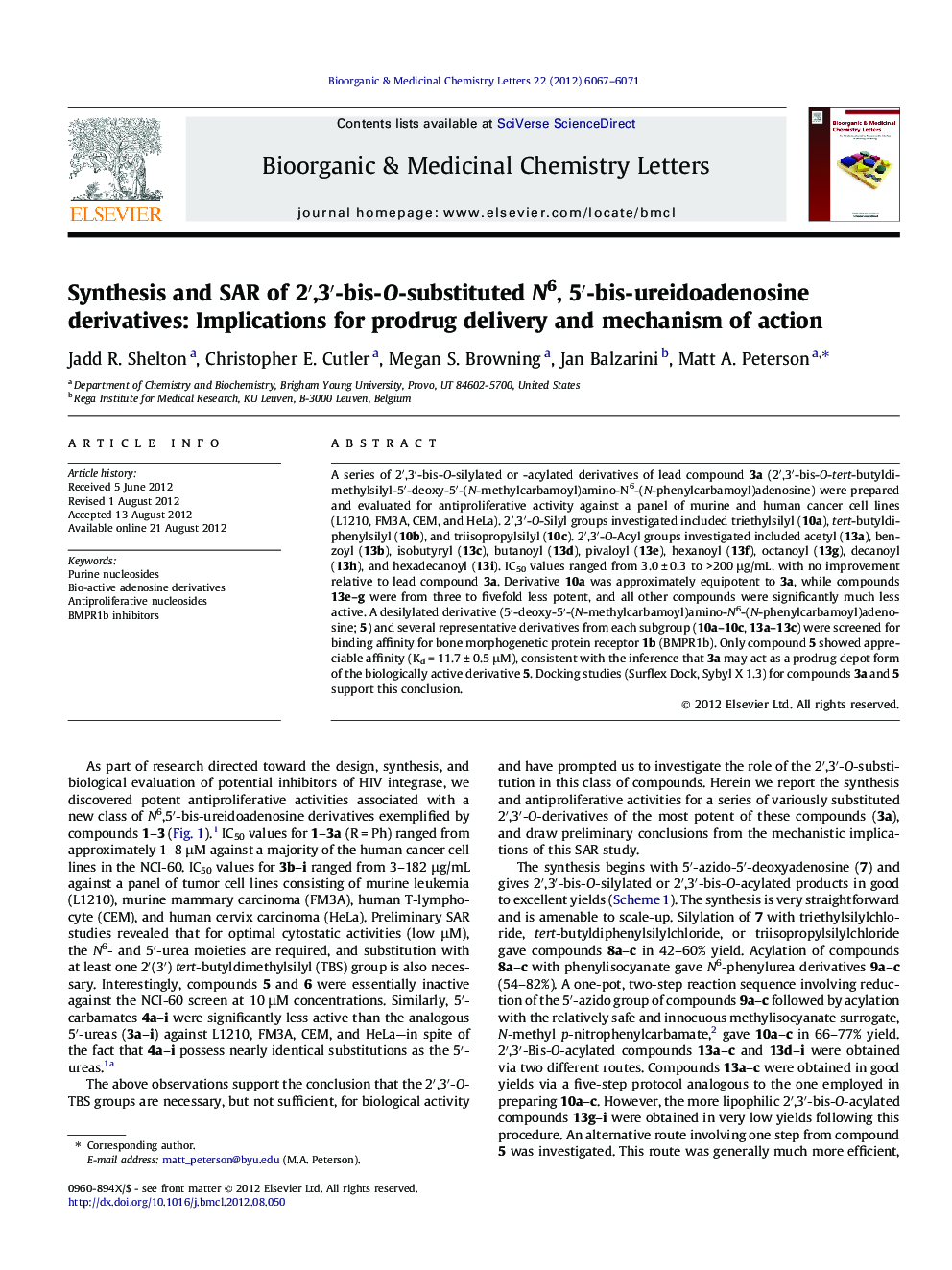| Article ID | Journal | Published Year | Pages | File Type |
|---|---|---|---|---|
| 10596457 | Bioorganic & Medicinal Chemistry Letters | 2012 | 5 Pages |
Abstract
A series of 2â²,3â²-bis-O-silylated or -acylated derivatives of lead compound 3a (2â²,3â²-bis-O-tert-butyldimethylsilyl-5â²-deoxy-5â²-(N-methylcarbamoyl)amino-N6-(N-phenylcarbamoyl)adenosine) were prepared and evaluated for antiproliferative activity against a panel of murine and human cancer cell lines (L1210, FM3A, CEM, and HeLa). 2â²,3â²-O-Silyl groups investigated included triethylsilyl (10a), tert-butyldiphenylsilyl (10b), and triisopropylsilyl (10c). 2â²,3â²-O-Acyl groups investigated included acetyl (13a), benzoyl (13b), isobutyryl (13c), butanoyl (13d), pivaloyl (13e), hexanoyl (13f), octanoyl (13g), decanoyl (13h), and hexadecanoyl (13i). IC50 values ranged from 3.0 ± 0.3 to >200 μg/mL, with no improvement relative to lead compound 3a. Derivative 10a was approximately equipotent to 3a, while compounds 13e-g were from three to fivefold less potent, and all other compounds were significantly much less active. A desilylated derivative (5â²-deoxy-5â²-(N-methylcarbamoyl)amino-N6-(N-phenylcarbamoyl)adenosine; 5) and several representative derivatives from each subgroup (10a-10c, 13a-13c) were screened for binding affinity for bone morphogenetic protein receptor 1b (BMPR1b). Only compound 5 showed appreciable affinity (Kd = 11.7 ± 0.5 μM), consistent with the inference that 3a may act as a prodrug depot form of the biologically active derivative 5. Docking studies (Surflex Dock, Sybyl X 1.3) for compounds 3a and 5 support this conclusion.
Keywords
Related Topics
Physical Sciences and Engineering
Chemistry
Organic Chemistry
Authors
Jadd R. Shelton, Christopher E. Cutler, Megan S. Browning, Jan Balzarini, Matt A. Peterson,
